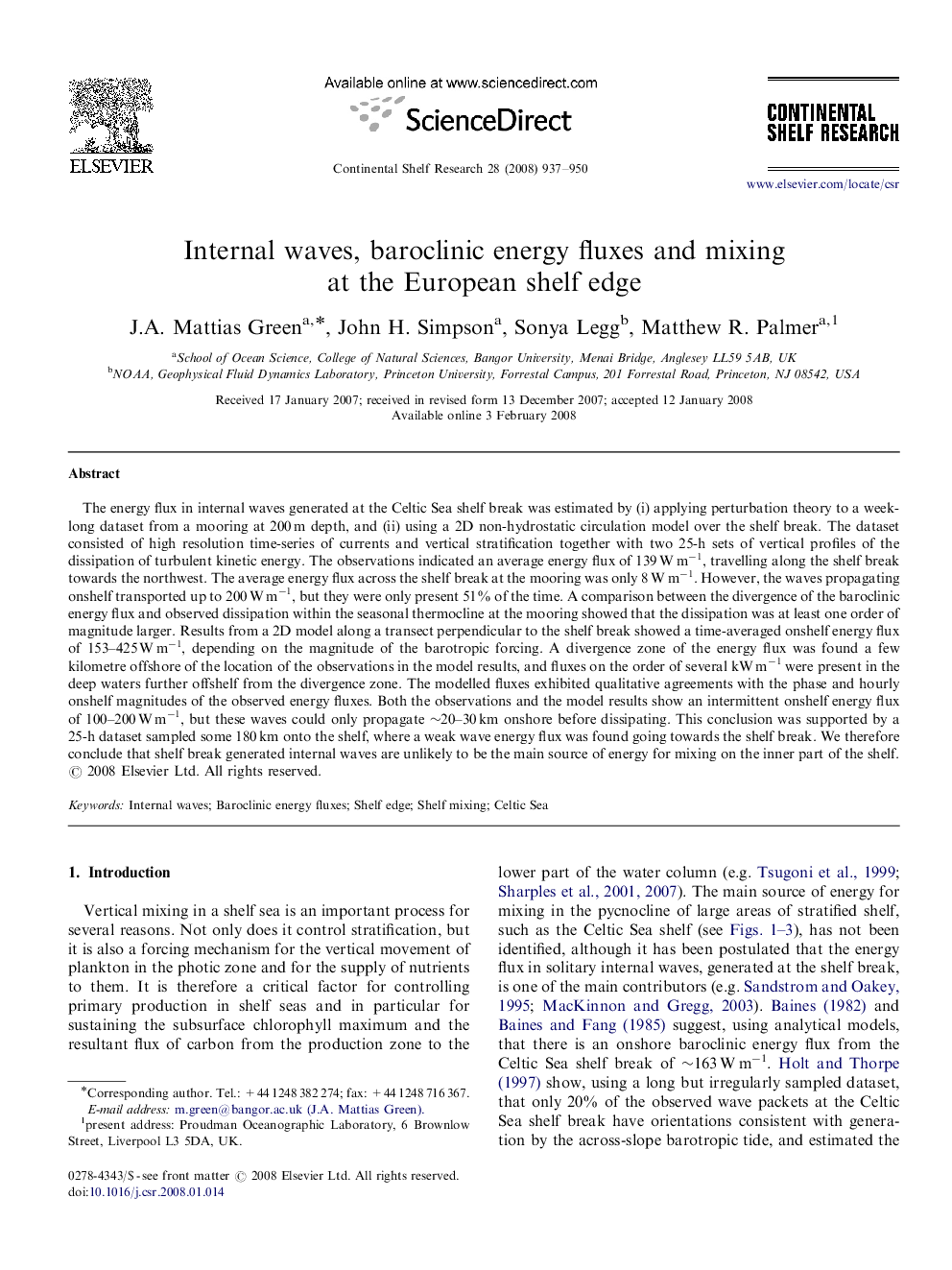| کد مقاله | کد نشریه | سال انتشار | مقاله انگلیسی | نسخه تمام متن |
|---|---|---|---|---|
| 4533230 | 1325176 | 2008 | 14 صفحه PDF | دانلود رایگان |

The energy flux in internal waves generated at the Celtic Sea shelf break was estimated by (i) applying perturbation theory to a week-long dataset from a mooring at 200 m depth, and (ii) using a 2D non-hydrostatic circulation model over the shelf break. The dataset consisted of high resolution time-series of currents and vertical stratification together with two 25-h sets of vertical profiles of the dissipation of turbulent kinetic energy. The observations indicated an average energy flux of 139 W m−1, travelling along the shelf break towards the northwest. The average energy flux across the shelf break at the mooring was only 8 W m−1. However, the waves propagating onshelf transported up to 200 W m−1, but they were only present 51% of the time. A comparison between the divergence of the baroclinic energy flux and observed dissipation within the seasonal thermocline at the mooring showed that the dissipation was at least one order of magnitude larger. Results from a 2D model along a transect perpendicular to the shelf break showed a time-averaged onshelf energy flux of 153–425 W m−1, depending on the magnitude of the barotropic forcing. A divergence zone of the energy flux was found a few kilometre offshore of the location of the observations in the model results, and fluxes on the order of several kW m−1 were present in the deep waters further offshelf from the divergence zone. The modelled fluxes exhibited qualitative agreements with the phase and hourly onshelf magnitudes of the observed energy fluxes. Both the observations and the model results show an intermittent onshelf energy flux of 100–200 W m−1, but these waves could only propagate ∼20–30 km onshore before dissipating. This conclusion was supported by a 25-h dataset sampled some 180 km onto the shelf, where a weak wave energy flux was found going towards the shelf break. We therefore conclude that shelf break generated internal waves are unlikely to be the main source of energy for mixing on the inner part of the shelf.
Journal: Continental Shelf Research - Volume 28, Issue 7, 30 April 2008, Pages 937–950